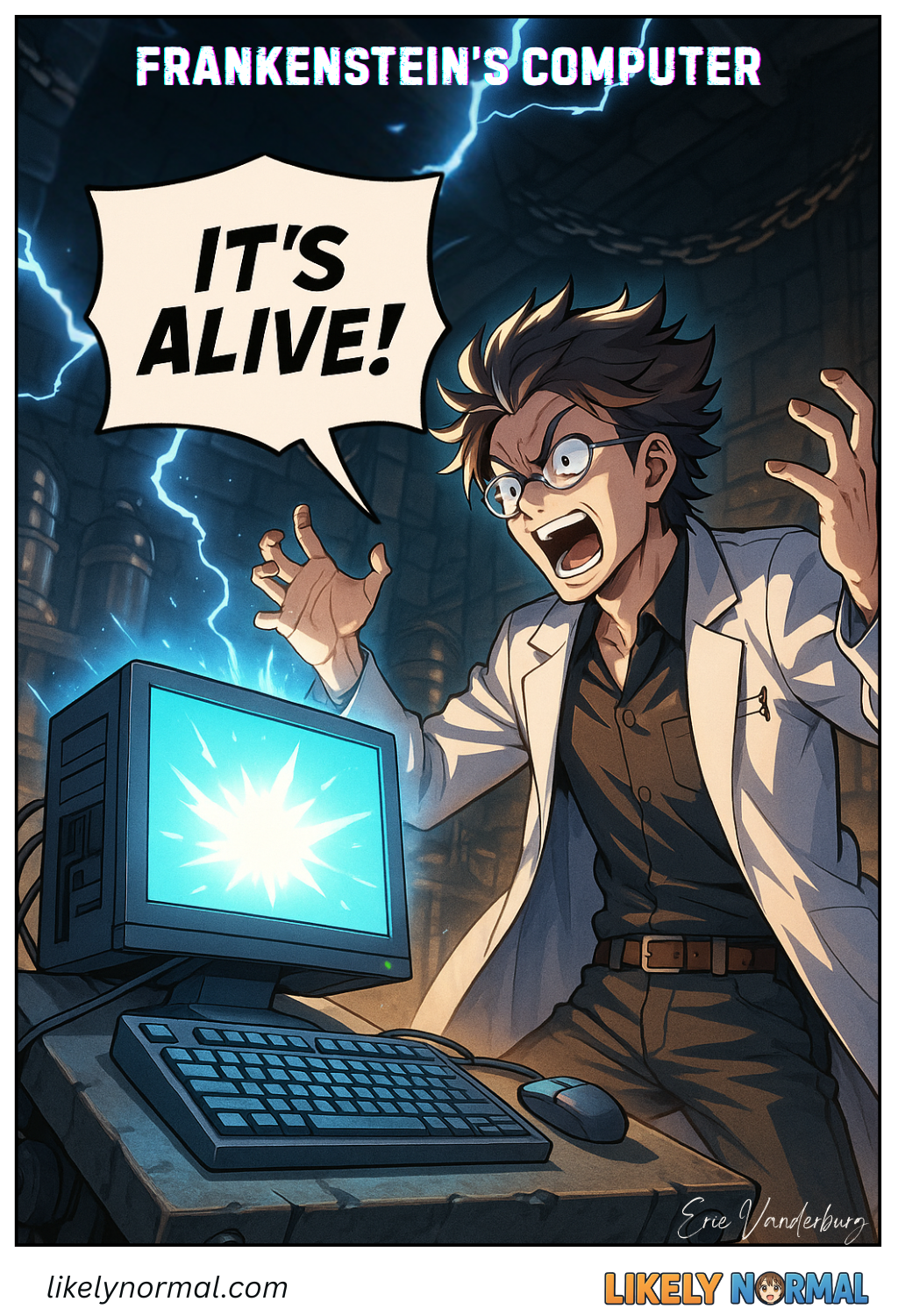Frankenstein’s Computer
Building a PC from spare parts is like performing open-heart surgery with tools from a garage sale—you’re never quite sure if the patient will boot up or burst into flames. You start with noble intentions: “I’ll just reuse this old GPU and save some money!” Three hours later, you’re elbow-deep in a rat’s nest of cables, questioning every life choice that led you to believe a power supply from 2012 was “still good.”
The case is always the first lie. “It has great airflow!” you declare, stuffing in a motherboard that’s two sizes too big, bending the I/O shield like a contortionist. The CPU cooler? A hulking relic from a bygone era, installed with the subtlety of a sledgehammer. “It fits… ish,” you mutter, ignoring the way it leans ominously to one side like the Tower of Pisa.
Then comes the GPU—a hand-me-down from a crypto miner that smells vaguely of burnt dreams. You jam it in, praying the PCIe slot holds. The RAM is a mismatched set you scavenged from old laptops, because who needs dual-channel when you have hope? And the storage? A janky parade of SSDs, HDDs, and that one mystery M.2 drive you found in a drawer labeled “probably important?”
When you finally hit the power button, the real horror begins. The fans roar like a jet engine, the RGB lights flicker like a haunted disco, and the BIOS screen appears only to mock you with error messages in cryptic PC hieroglyphics. “CPU Fan Error.” “Boot Device Not Found.” “Please Seek Professional Help.”
But then—miracle of miracles—it posts. You’ve done it. You’ve created a monstrosity that defies logic, a PC held together by zip ties and desperation. It’s ugly, it’s loud, and it absolutely shouldn’t work… but it does. For now.

Discussion ¬